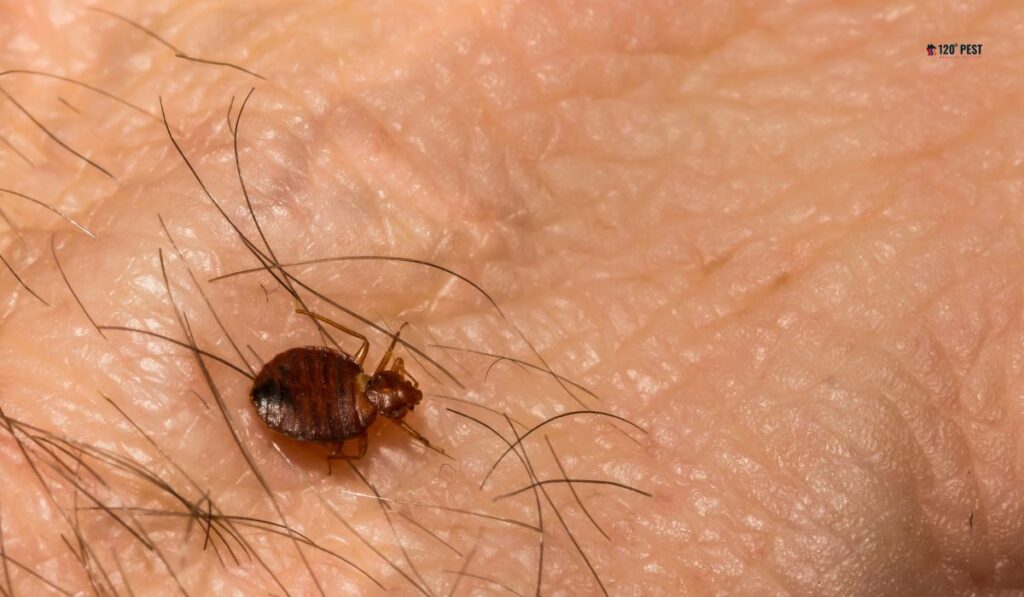Bed bugs, those notorious tiny pests that can wreak havoc in homes and hotels, are not limited to conventional spaces.
With the constant movement of goods and people across vast distances, the transportation industry is not exempt from the possibility of bed bug infestations.
In this comprehensive article, we delve into the intricacies of the likelihood of bed bugs making their presence known in semi-trucks.
From the factors influencing their presence to preventive measures and legal implications, we explore the multifaceted aspects of this pressing concern in the trucking industry.
Bed Bugs
Bed bugs, scientifically known as Cimex lectularius, are small, reddish-brown insects that feed on the blood of humans and animals.
While commonly associated with residential spaces, these pests can find their way into unexpected locations, including modes of transportation.
Uncommon Places for Bed Bugs
Traditionally, bed bugs have been linked to beds, couches, and other furniture.
However, their adaptability has led to infestations in less conventional spaces, posing challenges for industries like transportation.
Overview of Bed Bugs in Transportation
General Pervasiveness
Bed bugs have proven to be highly adaptable, thriving in various environments.
Their ability to hitch a ride on luggage, clothing, or even within the cargo itself makes them a potential concern in the transportation sector.
Specific Focus on Semi Trucks
Semi trucks, with their extensive journeys and frequent stops, present a unique set of challenges when it comes to preventing and managing bed bug infestations.
Factors Influencing Bed Bug Presence
High Mobility

The constant movement of semi trucks across different regions increases the likelihood of encountering bed bugs.
Their ability to latch onto surfaces during stops and transfers amplifies the risk.
Frequent Stops
Semi trucks often make frequent stops during their journeys, providing ample opportunities for bed bugs to transfer between the truck and various locations.
Cargo as a Potential Carrier
The nature of transported cargo can also play a role in bed bug infestations.
Certain goods may attract or harbor bed bugs, leading to challenges in eradication.
Identifying Bed Bugs in Semi Trucks
Signs and Symptoms
Recognizing the signs of a bed bug infestation is crucial.
From small reddish-brown stains on sheets to the distinct musty odor they emit, early detection is key.
Common Hiding Spots
Bed bugs are adept at hiding in cracks, crevices, and seams.
Understanding their common hiding spots is essential for effective inspections.
Assessing the Likelihood
Frequency of Truck Usage
The more frequently a semi truck is used, the higher the risk of encountering bed bugs. This section explores the correlation between usage patterns and infestation likelihood.
Routes and Regions Traveled
The geographical location of truck routes can significantly impact the likelihood of bed bug encounters. Certain regions may have higher prevalence, necessitating targeted preventive measures.
Maintenance and Cleanliness
Regular maintenance and cleanliness routines are essential in minimizing the risk of bed bug infestations. Proper cleaning protocols can be a proactive measure against these persistent pests.
Risks and Consequences
Impact on Cargo
Beyond the nuisance they pose to humans, bed bugs can also damage transported goods. This section examines the potential risks bed bugs pose to different types of cargo.
Health Concerns for Drivers
Truck drivers, spending extended periods in their vehicles, face unique health risks associated with bed bug infestations. Addressing these concerns is crucial for driver well-being.
Economic Ramifications for Companies
Bed bug infestations can have economic repercussions for trucking companies, ranging from treatment costs to damage claims. Understanding these ramifications is vital for effective risk management.
Preventive Measures
Regular Inspections
Implementing routine inspections of semi trucks can catch bed bug infestations in their early stages, preventing widespread issues.
Proper Cleaning Protocols
Establishing and adhering to thorough cleaning protocols for both cargo and truck interiors is a fundamental preventive measure against bed bugs.
Collaborative Efforts in the Industry
The trucking industry can benefit from collaborative efforts, such as information sharing and best practices, to collectively combat bed bug challenges.
Industry Regulations and Guidelines
Existing Policies
Analyzing current regulations related to bed bug prevention in the transportation sector provides insights into industry standards.
Room for Improvement
Identifying areas where existing regulations can be strengthened or improved ensures a more robust approach to bed bug prevention.
The Importance of Driver Education
Recognizing Bed Bug Signs
Educating truck drivers on recognizing early signs of bed bug infestations empowers them to take proactive measures.
Reporting Procedures
Establishing clear reporting procedures ensures swift action in the event of a suspected or confirmed bed bug infestation.
Technological Solutions
Advanced Detection Methods
Incorporating advanced detection methods, such as heat sensors and canine inspections, enhances the efficacy of bed bug identification.
Innovative Cleaning Technologies
Exploring innovative cleaning technologies, such as UV-C light treatments, can provide more efficient and environmentally friendly solutions.
Legal Implications
Responsibilities of Trucking Companies
Understanding the legal responsibilities of trucking companies in preventing and addressing bed bug infestations is crucial for compliance.
Liability in Case of Infestation
Examining the potential liability trucking companies may face in the event of a bed bug infestation is essential for risk management.
Public Perception and Reputation
Impact on Consumer Trust
The public’s perception of a trucking company can be significantly influenced by how it handles and prevents bed bug infestations. Building and maintaining consumer trust is paramount.
Media Coverage and Its Influence
Media coverage of bed bug incidents in the transportation industry can have lasting effects on public opinion. Proactive measures and transparent communication are key in managing reputation.
Future Trends and Developments
Emerging Technologies in Bed Bug Prevention
Exploring cutting-edge technologies, such as genetic modification of bed bugs or smart monitoring systems, showcases the potential future landscape of prevention.
Evolving Industry Standards
Anticipating and adapting to evolving industry standards ensures that trucking companies stay ahead in bed bug prevention measures.
International Perspectives
Variances in Bed Bug Prevalence
Understanding regional differences in bed bug prevalence helps trucking companies tailor preventive measures based on specific international routes.
Cross-Border Challenges and Solutions
Cross-border transportation poses unique challenges in bed bug prevention, requiring international collaboration for effective solutions.
Collaboration with Pest Control Services
Establishing Partnerships
Forming partnerships with pest control services creates a proactive approach to bed bug prevention, combining industry expertise for comprehensive solutions.
Integrated Approaches
Implementing integrated approaches that combine trucking company efforts with pest control services ensures a holistic and effective bed bug prevention strategy.
Eco-Friendly Solutions
Environmentally Safe Pest Control Methods
Considering and implementing eco-friendly pest control methods aligns with global efforts towards sustainability while addressing bed bug concerns.
Sustainable Practices in Transportation
Promoting sustainability in transportation practices can indirectly contribute to bed bug prevention by creating less favorable environments for their survival.
Insurance Considerations
Coverage for Bed Bug Infestations
Reviewing insurance policies to understand coverage for bed bug infestations helps trucking companies prepare for potential financial impacts.
Impact on Premiums
The presence of bed bugs can influence insurance premiums. Evaluating the financial implications ensures companies are adequately prepared.
Challenges in Bed Bug Eradication
Resistance to Traditional Pesticides
Examining the challenges posed by bed bugs’ resistance to traditional pesticides highlights the need for ongoing research and development.
Need for Research and Development
Investing in research and development is crucial for staying ahead of bed bug adaptations and developing more effective eradication methods.
Conclusion
In conclusion, addressing the likelihood of bed bugs in semi trucks demands a comprehensive and proactive approach within the transportation industry. To learn more about effective pest control solutions and preventative measures, contact 120 Pest Solutions today. Visit their contact page at 120 Pest to inquire and take the first step in safeguarding your trucks, cargo, and reputation from the challenges posed by bed bug infestations.
FAQs
How do bed bugs end up in semi trucks?
Bed bugs can hitch a ride on luggage, clothing, or within the cargo itself, making them potential concerns in the transportation sector.
Why focus on semi trucks specifically?
Semi trucks, due to their extensive journeys, frequent stops, and cargo nature, present unique challenges in preventing and managing bed bug infestations.
What factors influence the presence of bed bugs in semi trucks?
High mobility, frequent stops, and the nature of transported cargo can all contribute to the increased likelihood of encountering bed bugs.
How can bed bugs be identified in semi trucks?
Signs and symptoms include small reddish-brown stains on sheets and a distinct musty odor. Knowing common hiding spots is essential for effective inspections.
What risks do bed bugs pose to cargo and drivers?
Bed bugs can damage transported goods, and truck drivers, spending extended periods in their vehicles, face unique health risks associated with infestations.
How can companies minimize the risk of bed bug infestations?
Implementing regular inspections, adhering to proper cleaning protocols, and collaborating within the industry through information sharing are essential preventive measures.
Are there legal implications for trucking companies regarding bed bugs?
Yes, understanding legal responsibilities and potential liability in case of infestation is crucial for compliance and risk management.
How can the public’s perception be affected by bed bug incidents?
The public’s trust can be significantly influenced, emphasizing the importance of proactive measures, transparent communication, and managing reputation.
What are some emerging trends in bed bug prevention?
Exploring advanced technologies, evolving industry standards, and international perspectives showcase potential future landscapes in bed bug prevention.





